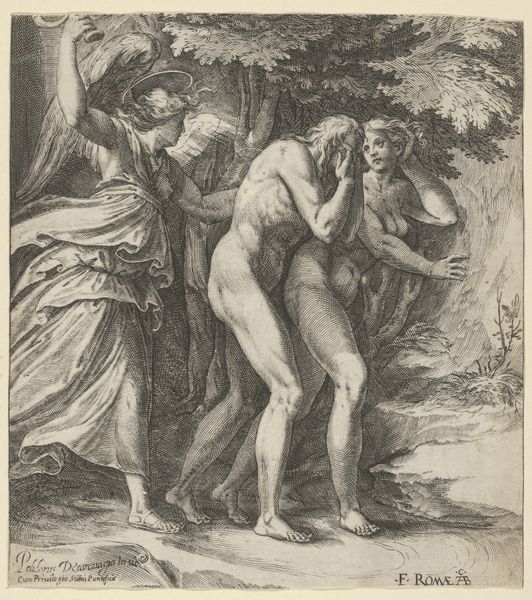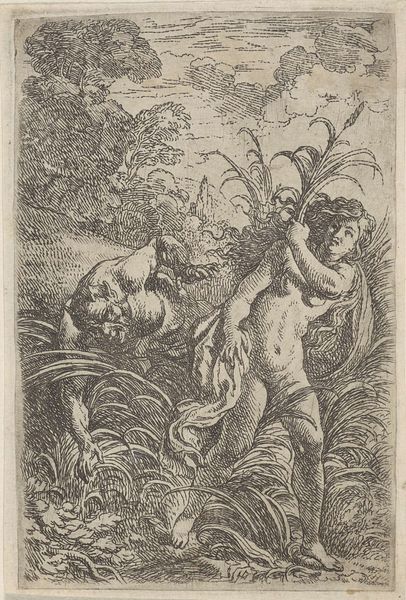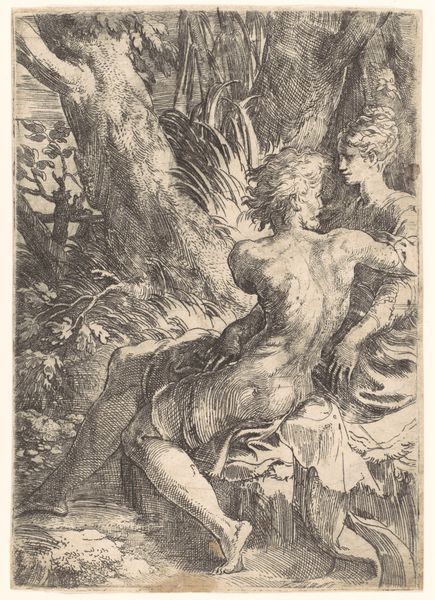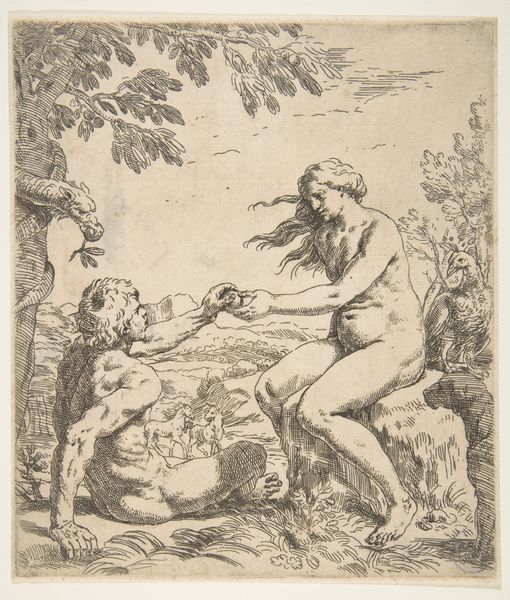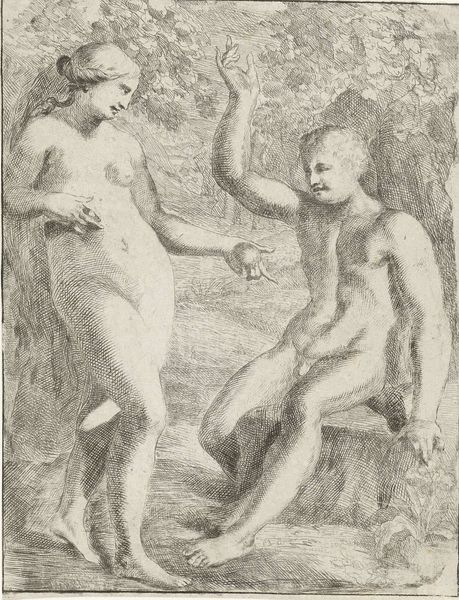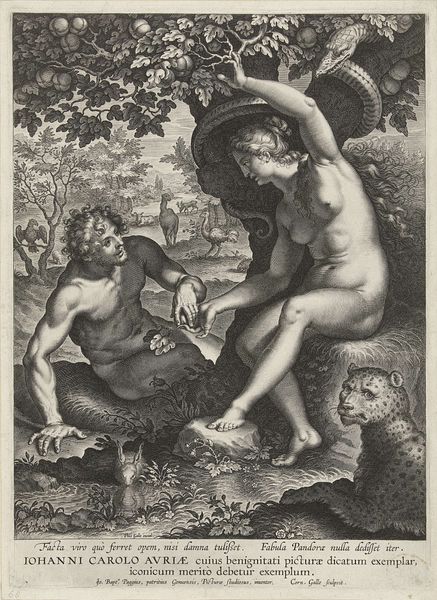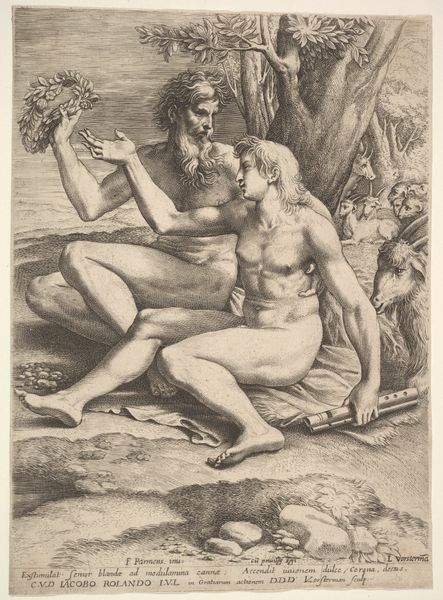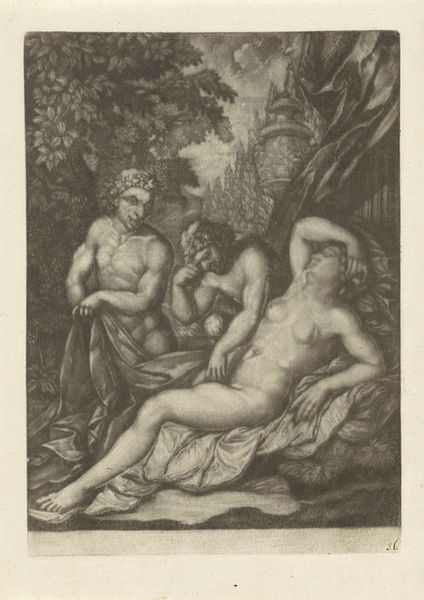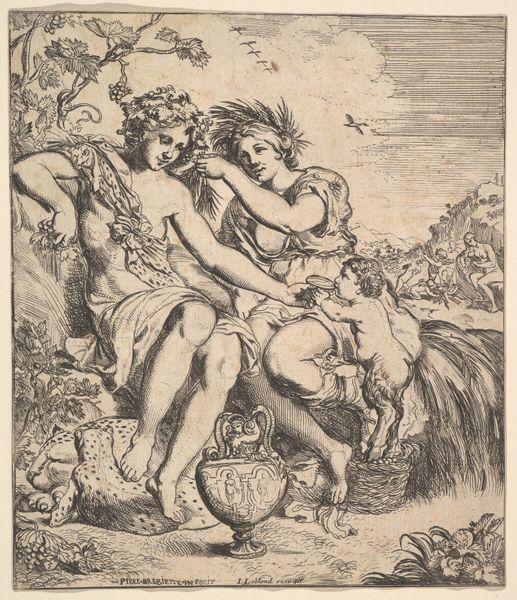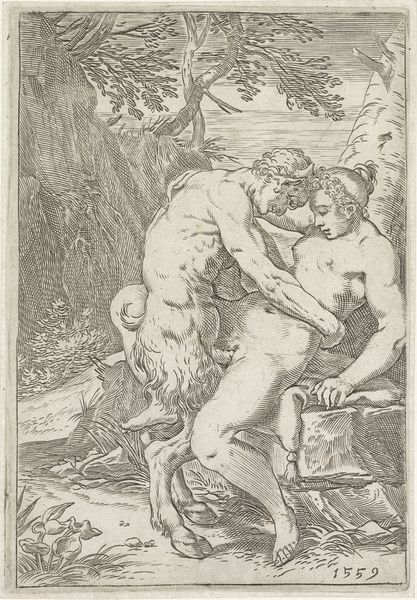
etching, engraving
#
baroque
#
pen drawing
#
pen illustration
#
pen sketch
#
etching
#
landscape
#
figuration
#
ink line art
#
history-painting
#
nude
#
engraving
Dimensions: height 152 mm, width 102 mm
Copyright: Rijks Museum: Open Domain
Editor: This etching, "Sater verrast een slapende nimf," made around 1590 to 1595 by Agostino Carracci and held at the Rijksmuseum, feels both unsettling and serene. The nymph seems so peacefully asleep, while the satyr's gesture is… well, not! What’s your take on it? Curator: You know, I find myself wrestling with the composition. The satyr, he’s all angles and sharp lines, a being of the wild pressing into this cultivated scene. And isn't it curious, the nymph's pose? The arm flung back as if warding something off even in sleep…it almost paints a silent drama, wouldn't you say? Are we voyeurs, accomplices, or simply witnesses to a story forever unfolding in monochrome? Editor: A silent drama – I like that! It definitely changes my perspective. Curator: And look at the way Carracci uses those precise lines— almost scientifically—yet imbues them with raw emotional intensity! Do you see the subtle hints of classicism mixed with the emerging Baroque flair? It’s a tug-of-war between intellect and sensation…which side wins in your opinion? Editor: That tension between classical form and baroque emotion hadn't occurred to me, but now it's all I see! Curator: Exactly! It speaks to the moment of creation, a painter wrestling with shifting cultural tides, just as we grapple with it now, centuries later! In essence, is it possible the satyr represents that irresistible, disruptive force of emotion itself? Editor: I initially saw it as a simple mythological scene, but now it feels charged with a whole different kind of energy. Curator: Absolutely. Art has that wonderful ability to shapeshift. To reflect the very core of our humanity— our fears, desires, and unending quest for beauty. And who knows, maybe Carracci’s “satyr” has more to teach us than meets the eye, even after all this time!
Comments
No comments
Be the first to comment and join the conversation on the ultimate creative platform.
